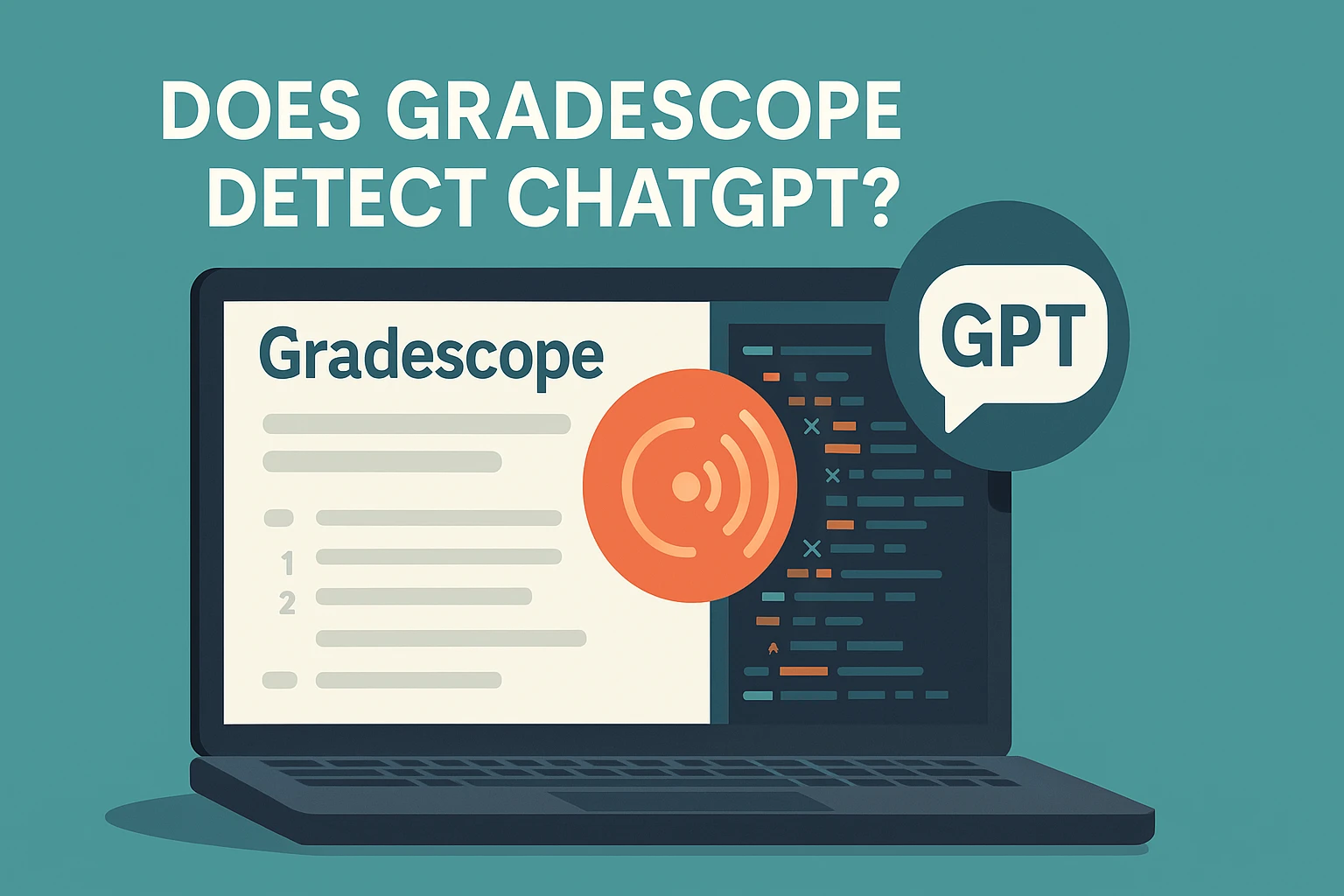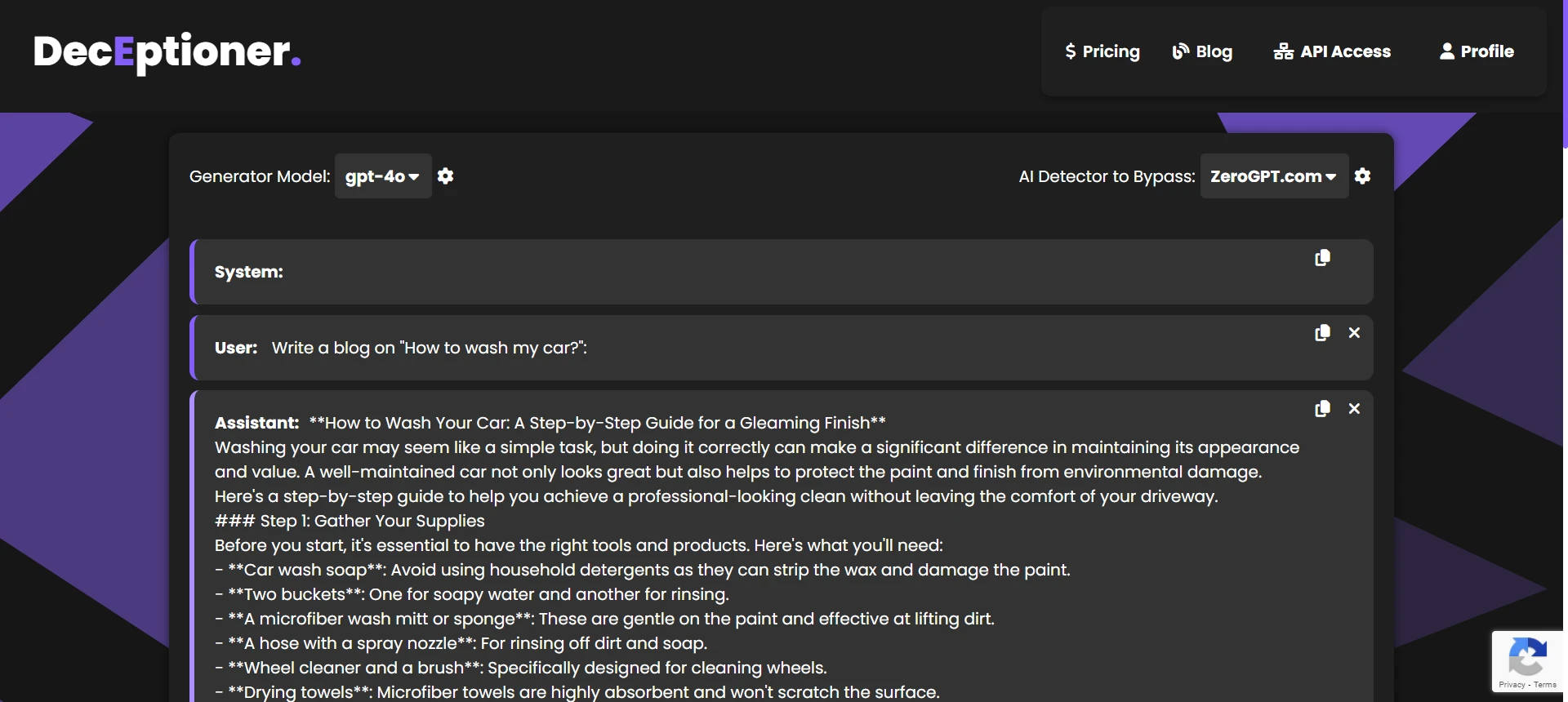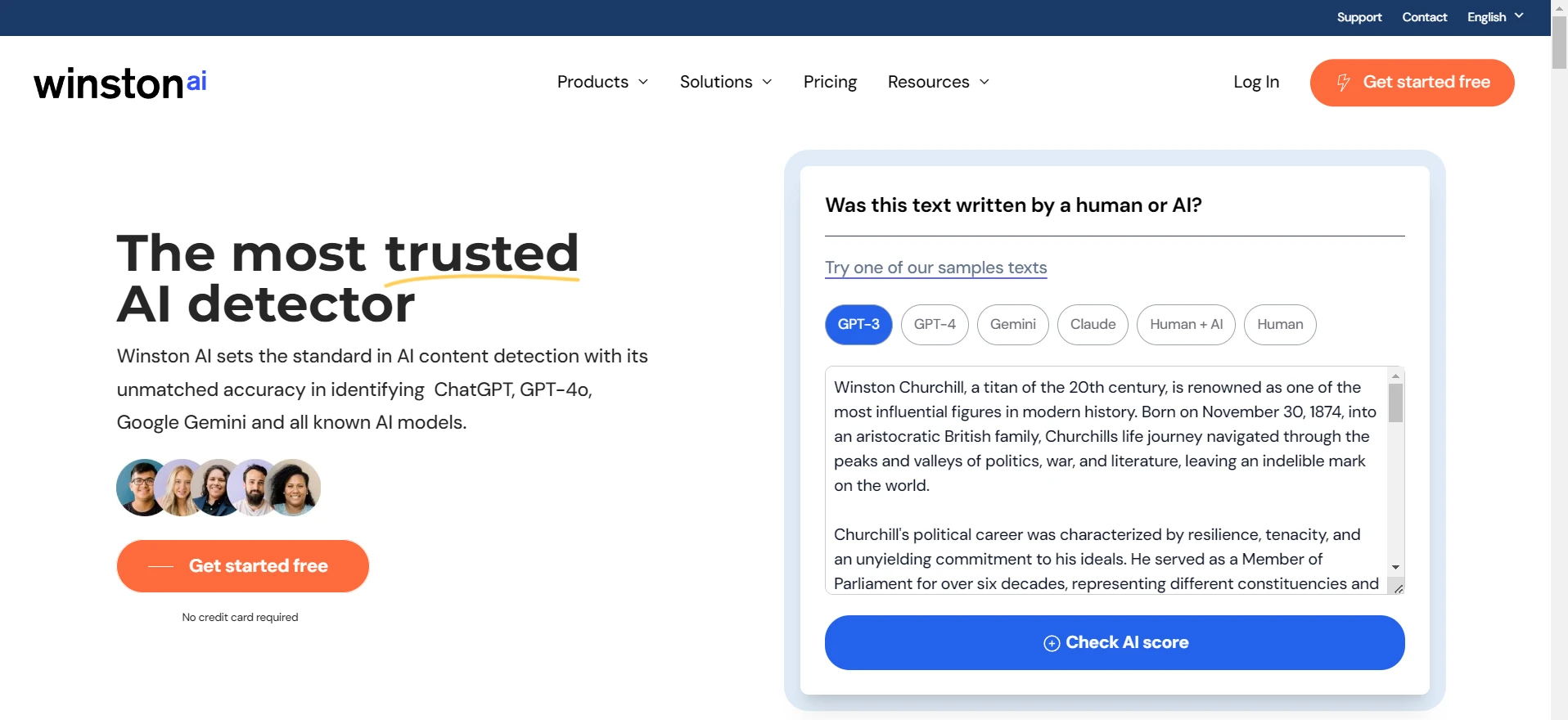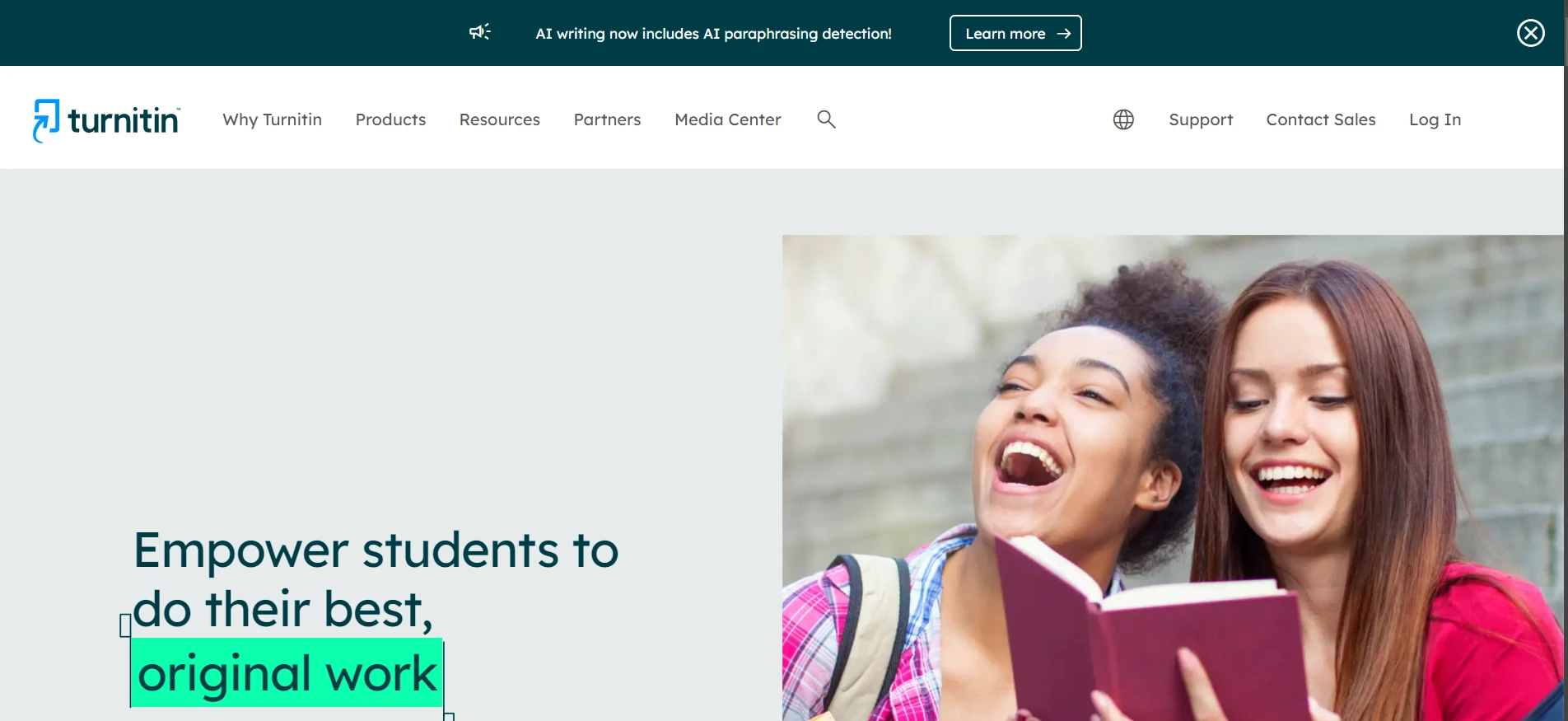The short answer is NO. The longer answer is the devil lies in the details. Keep reading to know more about it.
Why Gradescope does not detect ChatGPT?
Gradescope is primarily a grading and assessment platform. It is not a dedicated AI-content detector. You can see this on their website or any marketing materials. They don’t advertise AI detection as a feature which is a huge indicator in itself. Hence, if it is not made to accomplish this task it won't be able to do it.
Gradescope’s Primary Purpose
Gradescope is heavily used by universities for managing assignments, grading, and saving instructors’ time. You can see them highlighting features like grouping similar answers, setting time limits for quizzes, randomizing question order, and logging student submission timestamps. These functionalities help educators maintain fairness in exams. However, none of these revolve around detecting ChatGPT or other AI-generated text.
Built-In Code Similarity Checker
That said, Gradescope does have a code similarity checker. But it only checks for potential collusion among students who submit code to the same assignment. If Student A and Student B’s code are 85% the same, Gradescope will show a “Student A ↔ Student B: 85% matching sections” type of report.
It does not automatically declare that they cheated or used AI. The instructor has to take a closer look.
So, if two students copy the same AI-generated code from ChatGPT, Gradescope may catch it because they appear almost identical. However, if one student uses ChatGPT code that no one else uses, then it will appear as 0% similar on that assignment. Don’t rely on that entirely, though, because sometimes coding style and structure can still raise suspicion.
Exam-Setting Tools (Non-AI-Specific)
Gradescope also offers exam-setting features like time limits and question randomization. An instructor can set a quiz so it can only be accessed for a certain timeframe. This helps in deterring real-time look-ups of solutions but again, it’s not AI-specific. Submission timestamps and re-submission logs could raise a red flag. For instance, if you are constantly re-submitting after short intervals, an instructor might notice that pattern and suspect something’s up.
One thing they don’t provide is screen-sharing or tab-monitoring. For that, the university might pair Gradescope with proctoring services that do the live invigilation.
Turnitin Integration for Text and AI Detection
Gradescope itself doesn’t come with a text plagiarism or AI-writing detector. You need Turnitin for that. Basically, a university can link Gradescope assignments to Turnitin via the institution’s Learning Management System (LMS) or by manually uploading the submissions into Turnitin.
Turnitin’s Feedback Studio is the one that provides a text-similarity score (like a typical plagiarism score) AND an “AI percentage” for the instructor. This AI percentage claims to show how much of your text is likely AI-generated. But keep in mind it is not 100% foolproof. It may sometimes flag real human writing as AI or miss content that is obviously machine-generated.
Instructor Visibility & Workflow
Gradescope itself does not pop up a big “AI-generated” alert for instructors. So if you are solely worried about Gradescope, then you shouldn’t be. Instructors also have to do their own digging:
- Review the built-in code similarity report to see if your code suspiciously matches with others.
- If there is Turnitin integration, they may see an AI probability score or a text-similarity score.
- Ultimately, they use their own judgment to decide if there’s academic misconduct.
Key Limitations
Gradescope’s code similarity check only compares submissions within the same assignment. It doesn’t connect to some big internet code database or even past semester submissions. So if you used code from ChatGPT that absolutely no one else used in the class, it might slip through that net.
Also, there is no native AI text analysis in Gradescope. That is entirely reliant on external tools like Turnitin. And just like with any AI detector, an AI flag is only an indication, not definitive proof. There can be false-positives or false-negatives.
Common Evasion Tactics & Counterpoints
Some students try to rename variables or paraphrase AI outputs. This might get rid of surface-level similarities but instructors can still spot patterns in structure or logic. Also, ironically, paraphrasing AI code often introduces weird errors, which then might draw attention of your instructor.
Inconsistent or overly perfect answers, especially if your usual classwork has more mistakes, tend to raise suspicion. If you wrote blocks of text that read too polished despite your earlier writing style, that also can be a tip-off to an instructor.
Recent Developments & Future Outlook
Turnitin launched its AI Detector in 2023. They keep updating it, claiming better detection of paraphrased AI text. On the other hand, Gradescope is focusing on submission management and code similarity. They’re not building out an AI text detection feature.
I personally think that if you are overly worried about AI detection, you should either accept that your university may be using Turnitin or create a personal approach to writing and coding that is consistent with your own style. Educators are also adopting different assessment strategies, like oral exams or unique, personalized prompts that can’t be easily answered by ChatGPT.
Frequently Asked Questions
Q1. Does Gradescope detect ChatGPT automatically?
No, it cannot. Gradescope is not designed to detect ChatGPT or other AI text. It focuses on grouping similar submissions within the class and letting the instructor handle suspicious code.
Q2. Can Turnitin detect ChatGPT?
Yes, Turnitin has an AI detection feature that might spot ChatGPT-generated text. If your Gradescope assignment is synced with Turnitin, then Turnitin can flag the text and show an AI-generated percentage to your instructor.
Q3. Could renaming variables or paraphrasing help me pass Gradescope’s code similarity check?
It might reduce direct matches, but it doesn’t guarantee that all structural or logical patterns wouldn’t be flagged. Also, if your code ends up looking suspiciously identical to another’s, the instructor can still investigate further.
Q4. Does Gradescope track my screen or tabs during exams?
No, not on its own. If your school wants to monitor your screen, they will use a separate proctoring software or lock-down browser. Gradescope itself only handles submission management, time limits, question shuffling, etc.
Q5. Will I get caught if I use ChatGPT for my code solutions but no one else in the class does?
Gradescope will show 0% similarity to other submissions if no one used that same code. However, your instructor might still notice suspicious patterns or detect an inconsistent style in your coding approach. Also, if Turnitin is used for essays or text-based assignments, that could flag AI usage.
The Bottom Line
Gradescope alone, as we all know it, is not going to detect ChatGPT. However, do note that many institutions integrate Turnitin with Gradescope, which might flag your AI-generated text. Ultimately, if you keep your work authentic, you do not need to worry about any of these issues. And if you are using ChatGPT to get a headstart, be mindful of your institution’s academic honesty policy. In my opinion, the best approach is to always work on developing your own understanding and personal style, so that you don’t end up relying too much on AI or any rewriting tools.


![[STUDY] Can Phrasly AI Humanizer Bypass ZeroGPT?](/static/images/can-phrasly-ai-humanizer-bypass-zerogptpng.webp)
![[STUDY] Can Phrasly AI Bypass Turnitin?](/static/images/can-phrasly-ai-bypass-turnitinpng.webp)
![[HOT TAKE] Is Winston AI or GPTZero more accurate?](/static/images/is-winston-ai-or-gptzero-more-accuratepng.webp)
![[NO NONSENSE ANSWER] Is Turndetect Permanently Down?](/static/images/is-turndetect-downpng.webp)





